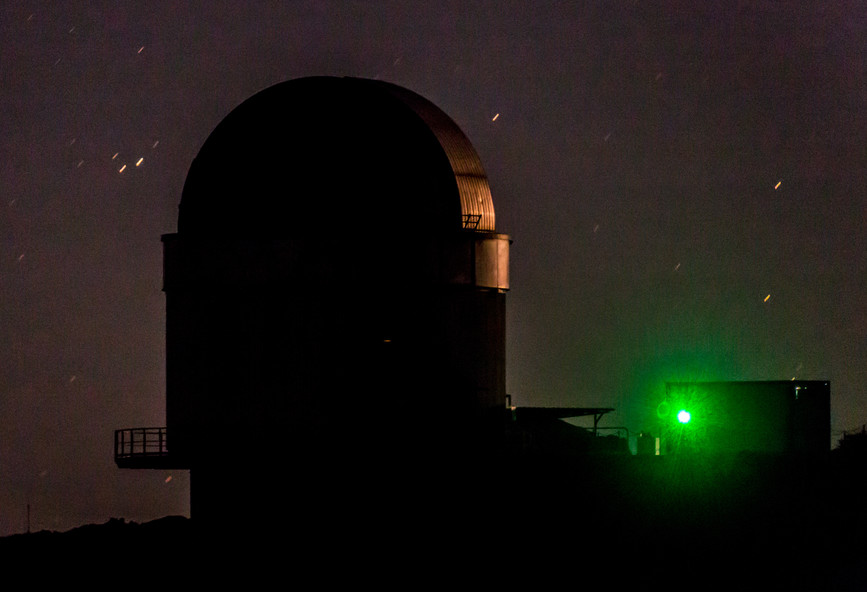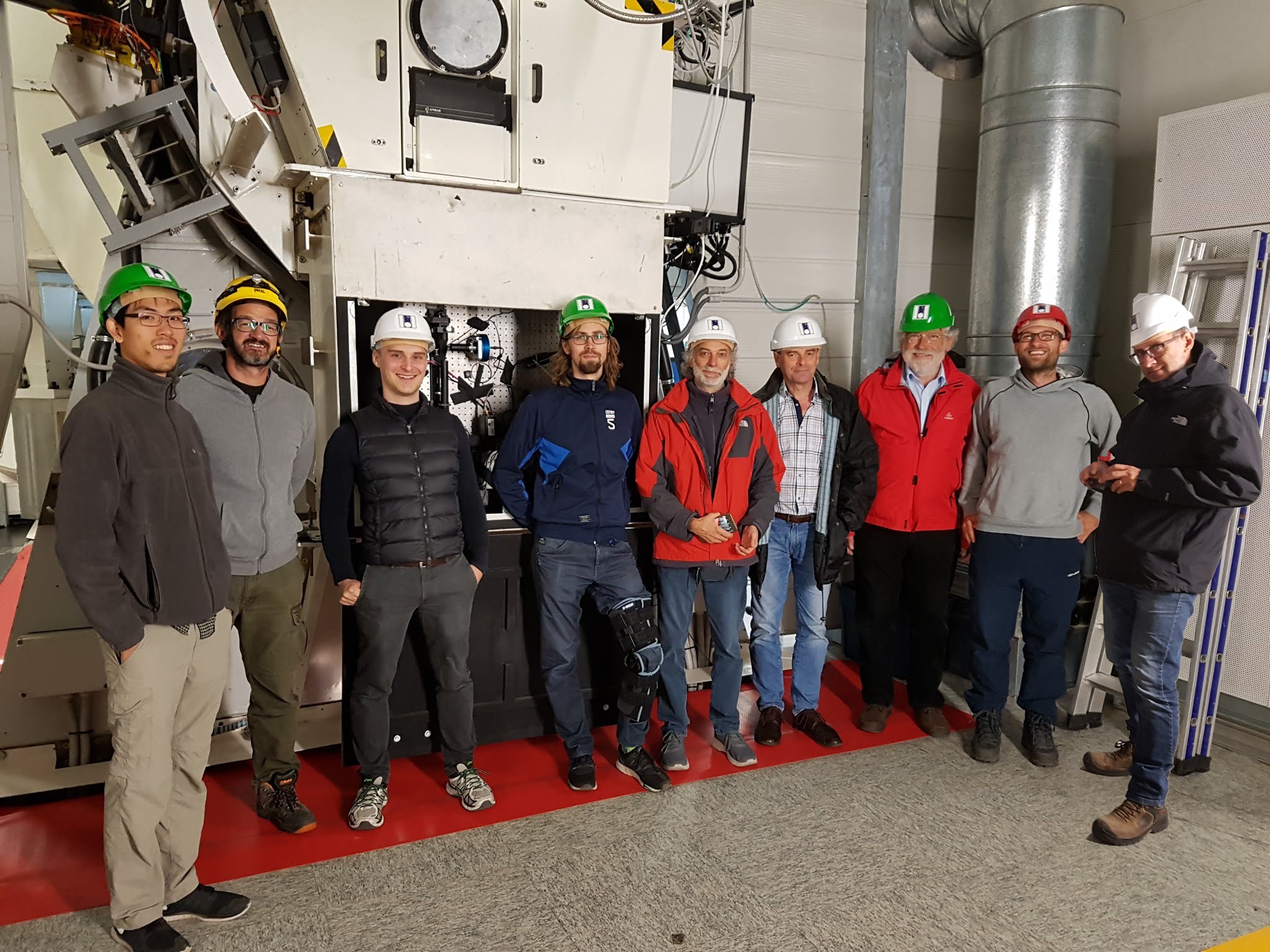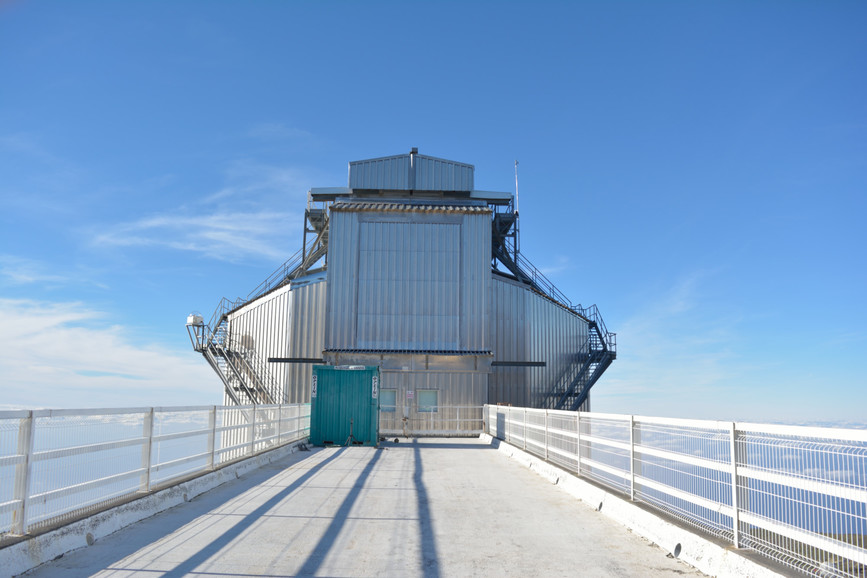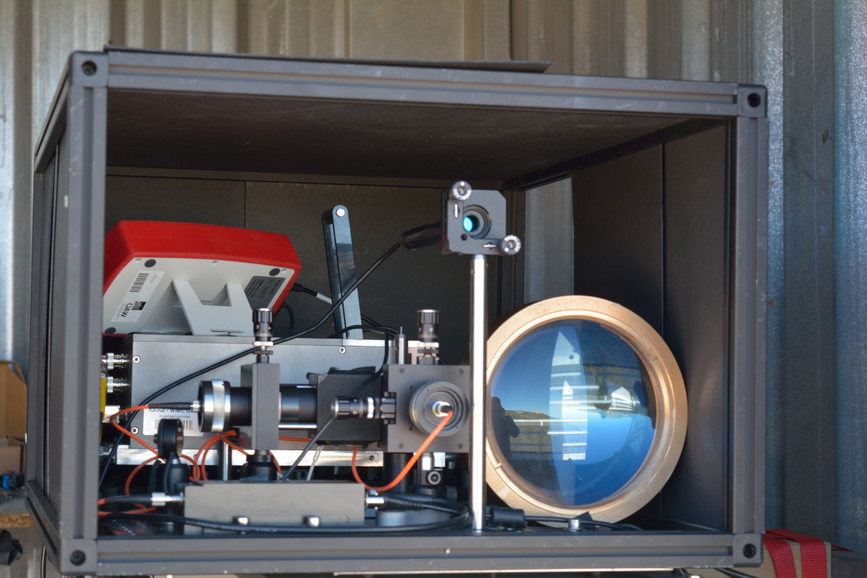The TNG and the confirmation of quantum entanglement using photons from distant astronomical objects
The experiment led by Anton Zeilinger (Austrian Academy of Sciences) with the collaboration of the University of Vienna, used the Telescopio Nazionale Galileo (TNG) together with the William Herschel Telescope (WHT) located in the Roque de Los Muchachos, to confirm predictions of quantum mechanics. The results have been published in Physical Review Letters.
In the experiment, the telescopes looked at two different, almost opposite locations in the sky. Each telescope was equipped with a two-channel photometer and collected the light from a quasar (quasi-stellar objects). An optical filter in the photometer split the light from the quasar between redder and bluer photons and these, randomly falling on one of the photometer’s channels, were used as random choice of measurements. This choice was used to control the system of reference on which to measure the polarization state on pairs of entangled photons (i.e. pairs of photons created in ways such that the quantum state of each particle cannot be described independently of the state of the other).
The pairs of entangled photons were generated from a mobile laboratory installed outside the Nordic Optical Telescope, and one was sent to a receiving station near the TNG, the other one to a similar receiving station next to the WHT. There, the individual polarization of each entangled photon was measured as decided by the fluctuations of the light from its respective quasar.
Following the Einstein’ s theory, called "spooky action at a distance", the measurement of one photon of an entangled pair has an instant influence on the measurement result of the other one, and he was hoping for a physics without entanglement. The question is: How is it decided which measurements are performed on the two photons? It is evident that it would be desirable to have decisions made completely independently, such that they cannot be influenced by a common cause.
In this new experiment two quasars have been used for the first time as a random number generators. The fluctuations of the light from these two quasars about 12 and 8 billion light-years away and on almost opposite points in the sky, decided on each entangled photon separately which polarization is measured. Since the light from the two quasars is reaching us rather short after the Big Bang, i.e. 13.8 billion years ago, any possible influence on both quasars could have happened in only 4% of the known Universe.
“The crucial challenge in the experiment was to make sure that the choice of polarization measurements on each of the entangled photons was done completely independent from us and from any environment, no matter how large” says Dominik Rauch, the first author of the paper. “This light, that is completely independent from us and almost our entire past, allowed us to use these distant Quasars as cosmic random number generators.”
Quantum physicist Anton Zeilinger explains: “This is the first time that light travelling to us from nearly the edge of the known Universe has been used in a quantum experiment. The results on the entangled photons confirmed the predictions of quantum mechanics. This is also very important for quantum technologies, because uninfluenced measurements on entangled states are important for a definitive proof of the security of various quantum procedures.”
The TNG staff has actively participated in this experiment helping the group of Dominik Rauch with the installation of the photometer at the Nasmyth Interface and of the receiving station on the access bridge of the TNG.
“It has been the first time that WHT and TNG coordinately worked together for the same experiment and it has been difficult to find the right observing time for both telescopes, so they only had a slot of few hours” says Adriano Ghedina, the technical Coordinator of the TNG. “We helped with the mounting of the instrument on the optical bench and gave them some fundamental hints for the optical alignment during daytime, in order to save precious time after sunset. We also had to make holes on the wall of the dome in order to minimize the length of the cables between the photometer on the telescope and the receiving station on the bridge.”
This result has been possible thank you to the collaboration between the Italian Telescopio Nazionale Galileo; the William Herschel Telescope; the Austrian Academy of Sciences and the University of Vienna; the Massachusetts Institute of Technology; the Harvey Mudd College and the University of California, San Diego and the Chinese School of Computer Technology.

A source of entangled photons sends light particle to receiver stations from a mobile quantum physical laboratory mounted near the Nordic Optical Telescope in the Roque de Los Muchachos (La Palma). The measurement of the entangled photons was controlled by the light of the distant quasars captured by the TNG and WHT telescopes. Credits: Massimo Cecconi / INAF – FGG.

The team in front of the 2-channels photometer mounted at the Nasmyth interface of the TNG. From left to right: C. Leung, A. Ghedina, D. Rauch, J. Handsteiner, E. Molinari, C. Benn, A. Zeilinger, A. Hochrainer, M. Cecconi. Credits: Adriano Ghedina / INAF-FGG.

One of the receiving stations for the entangled photons was placed in a container on the access bridge to the TNG. Credits: Dominik Rauch / Austrian Academy of Science.

Detailed view of one of the 2 receiver stations for entangled photons which were operated at the TNG and the WHT.
Useful links:

